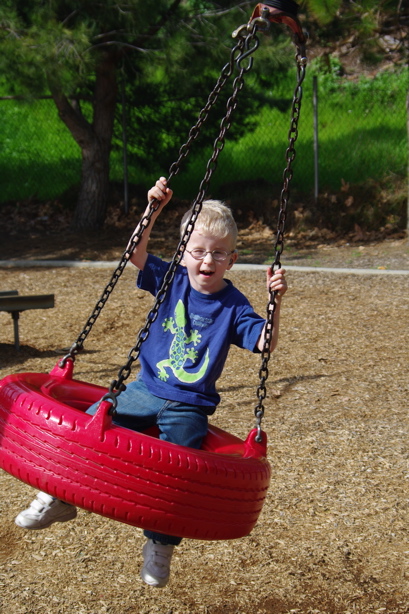Shannon Hale on writing:
Sometimes I wish writing a book could just be easy for me at last. But when I think about it practically, I am glad it’s a struggle. I am (as usual) attempting to write a book that’s too hard for me. I’m telling a story I’m not smart enough to tell. The risk of failure is huge. But I prefer it this way. I’m forced to learn, forced to smarten myself up, forced to wrestle. And if it works, then I’ll have written something that is better than I am.
Colleen Mondor on the difficulty of finding a book’s audience once it’s published:
There is less money out there to promote books like mine (mid list debut author) and more noise to compete against. Not only are there still the high dollar books sucking all the marketing oxygen out of the room (this will never change) but now there are a million self-published authors sending out emails on their indy publications and they are filling up inboxes left and right as well.
[snip]
Somehow, in the midst of all this, I am supposed to still be a writer but now on something new, and still run a small business and still do all those other things that we all do. And I’m supposed to do this because this is just how it is now, this is what it is like for the average 21st century author. The question I’m weighing – seriously weighing – is if it is worth it. Is this life, where you feel overlooked and underappreciated and sometimes just flat out angry, the life I want to have? Did I expect a NYTimes best seller? No – please. But I expected just one – just one – response from all those emails and mailings. So I have to think long and hard about where I go from here and how far on this road I’m interested in traveling now that I know how lonely it gets.
Do read this whole post, if you care about books. Selling a book to a publisher is only the first hurdle. Getting it in front of readers’ eyes can be even harder. As Colleen notes, there’s maybe a six-month window of time when your publisher can put some effort into promoting your book—along with all the other books on that season’s list. Much depends upon the efforts of the author: connecting with readers, arranging booksignings and school visits, attending conferences, participating in blog tours, doing all sorts of leg work. And usually, by the time the book does come out, you’re deep into the writing of the next one, possibly on deadline. It’s hard to climb out of the book you’re writing to help promote the book that just came out. But promote it you must, or it may fade away entirely. And then the next one will be that much harder to sell.
Colleen’s book, by the way, sounds amazing. The Map of My Dead Pilots, about “flying, pilots, and Alaska—and, more specifically, about those pilots who take death-defying risks in the Last Frontier and sometimes pay the price.” Very much looking forward to reading it.
Julianna Baggott’s advice to a young novelist:
What I’d like to add is that it’s hard to go public with this very private endeavor — this thing that lives in the drawers of your desk — no matter how long you’ve worked toward it. And the catch is that you won’t be able to complain about it. People won’t understand. You got what you wanted. You’re a published novelist. Shut up. But that only makes it feel more isolating. There is a very strange rearrangement of cells — or, at least, that’s what I felt and still sometimes feel in this process of going public, of opening up to large-scale judgment. We’re artists after all; we got into this business, many of us, because we observe closely — out of necessity or instinct or need — and feel things sharply.
May 20, 2010 @ 2:05 pm | Filed under:
Books 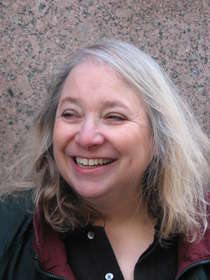 I am pretty excited about today’s post. When I got my first job in children’s publishing, working as the editorial assistant to Stephanie Spinner at Random House, one of the best parts of the job was getting to meet and talk to and learn from Real Writers. And by far my favorite of the many wonderful writers I met in that context was an author named Ellen Weiss, who had a staggering number of books to her credit. Her writing was hilarious—I think The Poof Point was the first one of Ellen’s books I read on the job, and I remember Stephanie poking her head out of her office to see what kept making me giggle out loud—and Ellen herself was one of the kindest, warmest people I had ever (and still have ever) met.
I am pretty excited about today’s post. When I got my first job in children’s publishing, working as the editorial assistant to Stephanie Spinner at Random House, one of the best parts of the job was getting to meet and talk to and learn from Real Writers. And by far my favorite of the many wonderful writers I met in that context was an author named Ellen Weiss, who had a staggering number of books to her credit. Her writing was hilarious—I think The Poof Point was the first one of Ellen’s books I read on the job, and I remember Stephanie poking her head out of her office to see what kept making me giggle out loud—and Ellen herself was one of the kindest, warmest people I had ever (and still have ever) met.
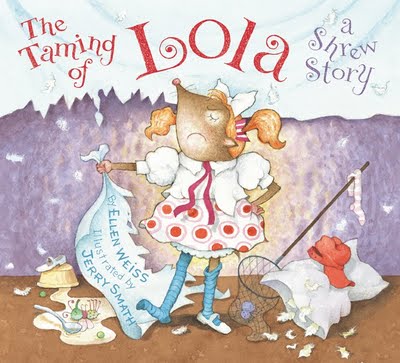
And one of the funniest. When Ellen’s latest picture book, The Taming of Lola: A Shrew Story, arrived here, Rilla promptly claimed it as her own. This time it was Scott who poked his head into the room to see what was making us giggle so hard.
“Ellen’s new book,” I told him.
“Aha,” he said. “That explains it.”
Exactly.
“The Magazine with Three Free Staples”
I asked Ellen if she would be so kind as to let me interview her here on Bonny Glen. I wanted to grill her about Lola, her awesomely titled new beginning reader, Porky and Bess, and her amazing career as the author of more than 150 books for children.
So Ellen, can you talk about how you got started?
Ellen Weiss: You know how when you’re young, you totally don’t appreciate what you have? Well, that was the story with my first real job. It was the most incredible job of my life, and I didn’t have a clue that I’d never have another one that was so much fun.
A looong time ago, I was working behind the desk at the East Asian Library at Columbia U., which was just as much career as I’d ever contemplated. There was a tiny ad in the Columbia Spectator for something like silly people who liked kids. Didn’t say what the job was. So I applied, and I got it, and it turned out to be a new kids’ magazine called Dynamite. There had never been anything like it. Before that, the world of kids’ magazines had tended toward two-color fun like Goofus and Gallant. Dynamite was full color and bursting with hipness and fun.
I must interject: How well I remember! I LOVED Dynamite. That and another magazine I remember as “WOW (is Mom upside down)”—I think I had subscriptions to both of them at one point.
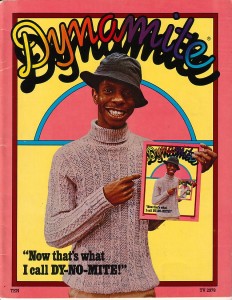 Ellen: Dynamite was published by Scholastic, and was the brain-child of Jenette Kahn, who, in addition to being a knockout, had an electric intelligence and a knack for attracting interesting people. I was very lucky to be a part of this group, some of whom are still my closest friends. We worked long hours, wasted huge amounts of time laughing our heads off, and put out a magazine that was such a huge success that we had a circulation of about a million and a half almost immediately. It was gigantic fun.
Ellen: Dynamite was published by Scholastic, and was the brain-child of Jenette Kahn, who, in addition to being a knockout, had an electric intelligence and a knack for attracting interesting people. I was very lucky to be a part of this group, some of whom are still my closest friends. We worked long hours, wasted huge amounts of time laughing our heads off, and put out a magazine that was such a huge success that we had a circulation of about a million and a half almost immediately. It was gigantic fun.
We only did three issues of Dynamite, and then left as a group to start another magazine, Smash, which didn’t do quite as well but was just as much fun to put together. Just four of us in a brownstone apartment, which was always referred to in the magazine as the Smash Building. It was art-directed by the great Milton Glaser, so each issue was a work of art. Its motto was “The Magazine With Three Free Staples.”
It took a few years for Smash to end its run, after which I went to what was then called Children’s Television Workshop to edit The Electric Company Magazine, a spinoff of the TV show. Much more corporate and sober. Not not-fun, but many more rules. By the time I had my daughter, in 1979, I was ready to go freelance. It was a natural progression to start writing Muppet books, which I loved doing. Over many years I wrote several score of them. The best group of characters ever created, IMHO.
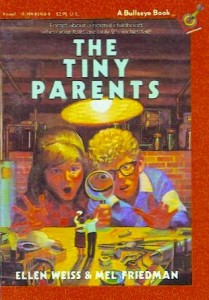 Eventually, though, I wanted to create characters of my own. First I had to convince my great Random House editor and good friend Stephanie Spinner that I could do it. Thankfully, I was able to do that, which resulted in our first “all ours” book, The Tiny Parents. Since then, I’ve managed to maintain a balance between the “ours” (or “mine”) books and assigned work, which fills in the gaps to pay the rent—always trying to tip the scales farther toward the former works. My guess is that all told, I’ve written about 150-200 books.
Eventually, though, I wanted to create characters of my own. First I had to convince my great Random House editor and good friend Stephanie Spinner that I could do it. Thankfully, I was able to do that, which resulted in our first “all ours” book, The Tiny Parents. Since then, I’ve managed to maintain a balance between the “ours” (or “mine”) books and assigned work, which fills in the gaps to pay the rent—always trying to tip the scales farther toward the former works. My guess is that all told, I’ve written about 150-200 books.
200 books. You fill me with awe. It’s amazing to think how much of your writing I read long before I met you—not just Dynamite but your Muppets stuff as well, I’m sure. During college I had a regular babysitting gig for kids who were Muppet fanatics. Those books were actually fun to read—not like certain big thick animated-movie-tie-in storybooks, NOT written by Ellen Weiss, which used to be agony to get through.
Okay, on to your new books…
Her name was Lola, she was a shrew-girl…
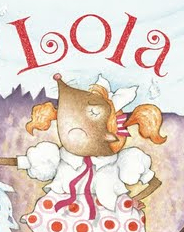 The Taming of Lola, brilliantly illustrated by Jerry Smath, is about a disagreeable young shrew who is accustomed to getting her way, one way or the other. If imperiousness won’t work, a royal tizzy will. Her volcanic-level tantrums keep her family nicely under her sway—until young Cousin Lester arrives for a visit and gives her a taste of her own lava.
The Taming of Lola, brilliantly illustrated by Jerry Smath, is about a disagreeable young shrew who is accustomed to getting her way, one way or the other. If imperiousness won’t work, a royal tizzy will. Her volcanic-level tantrums keep her family nicely under her sway—until young Cousin Lester arrives for a visit and gives her a taste of her own lava.
I always love to hear the story behind the story. What sparked Lola? Did you know from the beginning you were going to do a Taming of the Shrew thing?
I had the original idea for the story like 15 years ago, when I was doing editing work at Jim Henson Productions. We had this huge project going, a short bedtime story for every day of the year. One category was about woodland creatures. This idea never got used for that project, but it stuck in my mind.
The weird thing is that it wasn’t for a couple of years that the title hit me: Heeyyy, wait, she’s a shrew! and she gets tamed, sorta! Duh. And that’s when the five-act thing hit me too.
The grandmother who tells Lola’s story is a hoot. I’ve been going around saying, “Screaming is relaxing. You should try it some time.”
The framing device with Grandma was the brilliant idea of the brilliant Susan Van Metre, my editor. She also really pushed me harder on everything with the bugs, which was likewise brilliant I think. It wouldn’t have been the same book (or nearly as good) without all the bug stuff.
Tell me how you hooked up with Lola’s illustrator, Jerry Smath. I can’t imagine a more perfect artist for the job.
The most amazing story. Lola had been in a swoon at Abrams for quite a while, due to lack of the right illustrator. I had pretty much given up hope on it, which was sad because, even though I’ve done a zillion mass-market picture books, this was, after 30 years, my very first jacketed picture book. (Before this, all my trade books had been middle-grade or chapter books.) Then, maybe a year ago, Mel and I were having dinner with some friends who run an inn in Great Barrington, MA. “We have an illustrator staying here,” they said. “We’ll introduce you.” They couldn’t remember his name offhand.
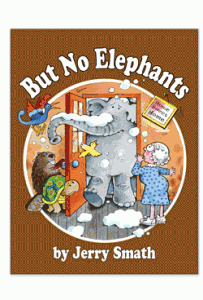 So we met in the foyer as Jerry and his wife were going out for dinner. “Jerry Smath!” I said. “I love your work. We read But No Elephants about a thousand times in our house.” Jerry told me he had a picture book coming out with Abrams, and I of course told him I had a book sitting on the shelf there. “Send it to me,” he said. “I’ll see if I like it.” So I did, assuming, as I always do, that nothing would come of it. About a week later, he called me and told me that he loved it and he’d done sketches for the whole book, and did I want to see them. Well, once I picked myself up from the floor, I answered in the affirmative. Mel and I drove up to Croton, where he lives, and sat in his living room and looked at them, and I could not believe what he’d done. He’d had so many clever ideas for spicing up the text. He was the perfect illustrator for this book, and I happened to meet him in the foyer of an inn in Massachusetts.
So we met in the foyer as Jerry and his wife were going out for dinner. “Jerry Smath!” I said. “I love your work. We read But No Elephants about a thousand times in our house.” Jerry told me he had a picture book coming out with Abrams, and I of course told him I had a book sitting on the shelf there. “Send it to me,” he said. “I’ll see if I like it.” So I did, assuming, as I always do, that nothing would come of it. About a week later, he called me and told me that he loved it and he’d done sketches for the whole book, and did I want to see them. Well, once I picked myself up from the floor, I answered in the affirmative. Mel and I drove up to Croton, where he lives, and sat in his living room and looked at them, and I could not believe what he’d done. He’d had so many clever ideas for spicing up the text. He was the perfect illustrator for this book, and I happened to meet him in the foyer of an inn in Massachusetts.
All those fabulous details in the art—did you and Jerry come up with that stuff together? Fleanut Butter and Jelly! The Chicago Grubs!
All, all Jerry’s. And the way the text goes around in a circle on that one page? Jerry! And that fabulous grub doll? Jerry!
One of my favorite things is hearing about other writers’ work process. I ask everyone this. How do you work? Where? How much thinking do you do away from the desk? Do you work at a set time every day? Does it depend on the project? I eat gummy bears to help me think—anything like that for you? Tea or coffee? Music or silence?
Man, I wish I could say I was one of those writers who works from 8AM to 2PM every day without fail. But in fact, my writing time gets more chaotic over the years. I used to write anything that was important to me with pen and paper first, but over the years I’ve transitioned to all computer. But I just read Annie Proulx saying you HAVE to write with a pen, so I’m considering taking her advice. No music, ever. It screws up my rhythm.
Because I started freelancing when my daughter was born, I just set up my desk in the living room and learned to work with whatever distractions exploded around me. I’m not one of those people who needs a room with a door. Though it would be nice. I remember once when as an editor, I needed to call James Howe about something, and I got his wife. “He’s working now,” she said. “He’ll call you this evening.” Wowww,” I thought. “I need a doorkeeper!”
And then there’s the constant battle to shut out the siren song of Free Cell…
[People with six homeschooled kids plus a career don’t know about Free Cell, I’m sure.]
(Ha! You are talking to a woman who has 14 games of Lexulous going simultaneously.)
You have collaborated on many projects with your husband, Mel Friedman. What’s it like when you work together? Are you sitting there together, typing? Or do you brainstorm together and then one of you goes and writes?
For years after I stopped editing kids’ magazines and started writing books, I would get stuck on plots and ask Mel to help me, and he’d come up with amazing ideas. Finally it occurred to me that we should work together “officially.” We divide up pretty neatly: he’s the idea guy and I’m the get-it-written guy. He has the most amazing mind—kind of runs in a Douglas Adams groove. So we hammer out ideas together, mostly meaning that he comes up with a million and I cull the ones I think I can actually write. We have a sort of tradition of going out for breakfast or lunch at diners and working. Or we work in the car on the way up to the country. Then I write, he comments, and I rewrite.
Now: Your new beginning reader, Porky and Bess, which is possibly my favorite title ever. And a completely charming book. Same questions—what sparked it? Will we be seeing more of Porky and Bess?
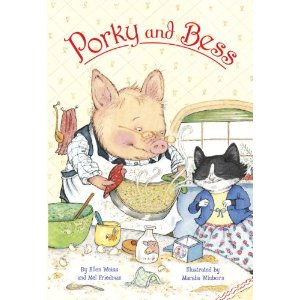
Thank you for liking the name! I kind of love it too, she said immodestly. In fact, for several years, all there WAS was the name. We tried this story and that story, and nothing was working right, until finally I woke up one morning, and boing, there it was: early reader, Frog and Toad-style. After that it was easy. More Porky and Bess? Your mouth to God’s ears, as my grandmother used to say. It’s looking good. Fingers crossed. We have lots of ideas—in fact, there’s a whole chapter already written that we couldn’t fit into the first book, about Porky’s lonely grandfather clock, which needs only a grandmother clock to make it happy. You heard it here first.
Do you have a favorite genre or reading level to write? I think you must have written every type of children’s book there is to write—picture books, beginning readers, novels, nonfiction, everything!
The only genre I haven’t written is YA, which kind of scares me, which is why I should probably do one someday. Actually, Mel and I are working on an idea now which started out as a middle-grade novel, but our agent feels it should be a YA book, so that day may be coming soon. Eeek!
“If you’re passionate about something…you can figure out a way to make a living from it.”
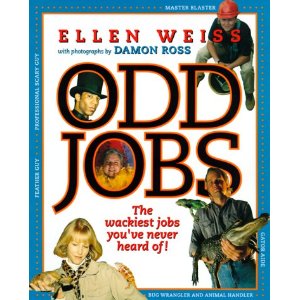
One of my favorite Ellen Weiss books is Odd Jobs. Can you tell us a bit about that one, how you came up with the idea, how you tracked down the people with interesting jobs, etc?
That book was actually the idea of the wonderful
Cylin Busby, who was an editor at Simon & Schuster at that time. I thought it would just be fun to talk to people with strange jobs, but as I worked on it, something very cool emerged. All these people had either stumbled on this weird thing that they did, or they’d always wanted to do it. But they were all very happy doing non-traditional jobs, and the message I ended up burning to tell kids is that you don’t have to have a “normal” job when you grow up. If you’re passionate about something, even when you’re eight, you can figure out a way to make a living from it.
That begs a question about your reading life (since writers tend to be readers, first and always). What do you like to read? Who are your favorite authors? (Or favorite books if that’s easier.)
Love Philip Pullman. Love Shel Silverstein. Love Daniel Pinkwater. Reading now, and loving, Octavian Nothing. Love first, most, and always, Winnie-ther-Pooh.
For grownups, Don DeLillo, Jane Austen, Michael Chabon, and Garcia Marquez immediately come to mind.
Any favorite publishing stories? You must have a million.
A favorite is one of those legendary typo stories. My old Muppets boss, the adorable Jane Leventhal, used to tell it about her father, who started Golden Books. He was working at MacMillan, and they were publishing a huge fancy encyclopedia set. Everybody in the office was very excited when the box came with the first copies — tooled leather, gold lettering, the works. Craning his neck to see from the edge of the throng was a guy from the mailroom, who said, “Is it really spelled ENCYLOPEDIA?”
Oh no! Ouch!!
Ellen, thanks so much for visiting us here in the Bonny Glen. I could keep asking questions all day, but Rilla is clamoring for another read-aloud of Lola. (She has informed me that she is the little sister shrew sitting on the stack of books at the dinner table is. Bet you didn’t know that.)
Linkapalola!
• Jen Robinson’s Books Page review of The Taming of Lola
• Lola at Seven Impossible Things Before Breakfast
• Ellen Weiss’s website
• Jerry Smath’s website
More books by Ellen Weiss:
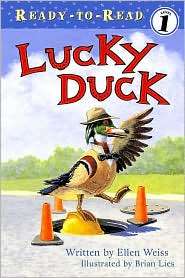
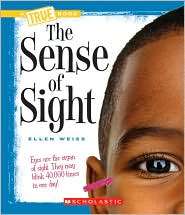

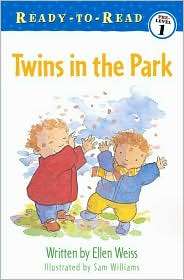
Ellen’s four delightful Twins books are soon to be reissued as board books by Simon & Schuster. Huck is very glad to hear this news. He enjoys eating books about twins.
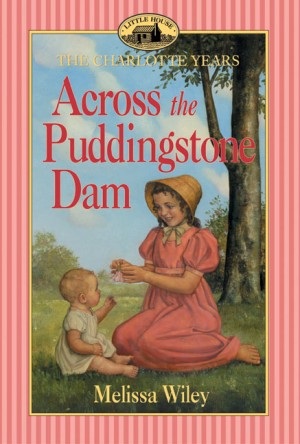 Got this question in the comments yesterday, and since it’s an inquiry I get often, I thought I’d pull it up into a post here:
Got this question in the comments yesterday, and since it’s an inquiry I get often, I thought I’d pull it up into a post here:












